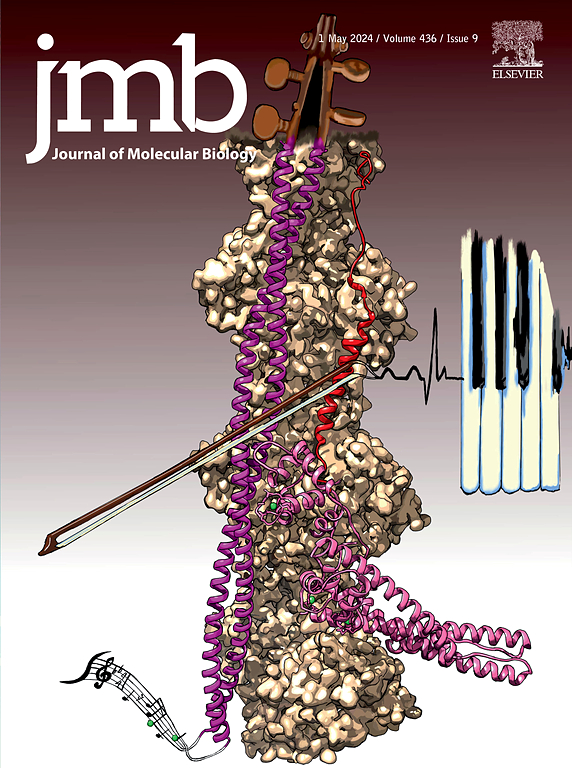ExoCarta 2024:基于网络的小细胞外囊泡货物储存库。
IF 4.5
2区 生物学
Q1 BIOCHEMISTRY & MOLECULAR BIOLOGY
引用次数: 0
摘要
小细胞外囊泡(sev)是所有细胞类型分泌到细胞外环境的内吞起源的小膜囊泡,已知在细胞间和细胞内通讯中起关键作用。这些囊泡含有蛋白质、核酸和脂质,其分子含量反映了宿主细胞的正常和病理生理状况。因此,对不同条件下sev的分子含量进行编目是一个重要的兴趣,因为这将有助于研究人员了解各种疾病和健康状态下sev的生物学作用和改变的细胞过程。在这里,我们报告ExoCarta (http://www.exocarta.org),一个免费访问的基于网络的研究纲要,包括在sev中检测到的DNA, RNA,蛋白质和脂质。excarta收录了已发表和未发表的sEV研究。当前版本的ExoCarta包含1249个sEV研究的数据,119,489个蛋白质条目,15,868个RNA条目,3,946个脂质条目和24,073个条目的定量数据。QUANT,一个定量插件,使用户能够实时比较基因/蛋白质研究条件之间的蛋白质丰度。ExoCarta为sEV蛋白提供基因本体(GO)注释和反应组途径以及动态蛋白质-蛋白质相互作用网络。用户可以下载一个以标签分隔的文件,其中包含最多已识别的sEV蛋白。sEV DNA研究、QUANT和定期更新的ExoCarta数据库数据集的整合,使其成为全球小细胞外囊泡研究人员的宝贵资源。本文章由计算机程序翻译,如有差异,请以英文原文为准。

ExoCarta 2024: A Web-based Repository of Small Extracellular Vesicles Cargo
Small extracellular vesicles (sEVs) are small membrane vesicles of endocytic origin secreted into the extracellular environment by all cell types and are known to play a crucial role in intercellular and intracellular communication. These vesicles contain proteins, nucleic acids and lipids and their molecular content reflect the normal and pathophysiological conditions of the host cells. Hence, there is a significant interest in cataloguing the molecular content of sEVs in various conditions as this would aid researchers in understanding the biological roles and altered cellular processes under various diseases and healthy state.
Here we report ExoCarta (https://www.exocarta.org), a freely accessible web-based compendium of studies that encompasses DNA, RNA, proteins, and lipids that are detected in sEVs. ExoCarta catalogues both published and unpublished sEV studies. Current version of ExoCarta contains data from 1249 sEV studies, 119,489 protein entries, 15,868 RNA entries, 3,946 lipid entries and quantitative data for 24,073 entries. QUANT, a quantitative plugin, enables users to compare protein abundance between conditions in a study for gene/protein of interest in real time. ExoCarta provides Gene Ontology (GO) annotations and reactome pathways along with dynamic protein–protein interaction networks, for sEV proteins. A tab delimited file containing the most identified sEV proteins is available for users to download. The integration of sEV DNA studies, QUANT and regularly updated dataset of the ExoCarta database makes it an invaluable resource for small extracellular vesicles researchers across the globe.
求助全文
通过发布文献求助,成功后即可免费获取论文全文。
去求助
来源期刊

Journal of Molecular Biology
生物-生化与分子生物学
CiteScore
11.30
自引率
1.80%
发文量
412
审稿时长
28 days
期刊介绍:
Journal of Molecular Biology (JMB) provides high quality, comprehensive and broad coverage in all areas of molecular biology. The journal publishes original scientific research papers that provide mechanistic and functional insights and report a significant advance to the field. The journal encourages the submission of multidisciplinary studies that use complementary experimental and computational approaches to address challenging biological questions.
Research areas include but are not limited to: Biomolecular interactions, signaling networks, systems biology; Cell cycle, cell growth, cell differentiation; Cell death, autophagy; Cell signaling and regulation; Chemical biology; Computational biology, in combination with experimental studies; DNA replication, repair, and recombination; Development, regenerative biology, mechanistic and functional studies of stem cells; Epigenetics, chromatin structure and function; Gene expression; Membrane processes, cell surface proteins and cell-cell interactions; Methodological advances, both experimental and theoretical, including databases; Microbiology, virology, and interactions with the host or environment; Microbiota mechanistic and functional studies; Nuclear organization; Post-translational modifications, proteomics; Processing and function of biologically important macromolecules and complexes; Molecular basis of disease; RNA processing, structure and functions of non-coding RNAs, transcription; Sorting, spatiotemporal organization, trafficking; Structural biology; Synthetic biology; Translation, protein folding, chaperones, protein degradation and quality control.
 求助内容:
求助内容: 应助结果提醒方式:
应助结果提醒方式:


